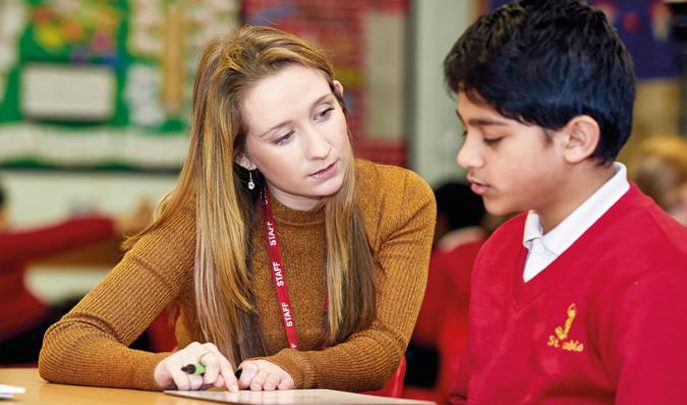How To Cram More Vocabulary And Comprehension Into The School Day

Broadening a child’s vocabulary won’t just help them pass a test, it will also enrich their life, says Jane Andrews…

- by Jane Andrews

The 2016 KS2 reading paper proved to be challenging for pupils around the country. However, it wasn’t through the introduction of 19th-century authors as we feared. It is clear that the decodability of the 2016 reading test was no more challenging than that of the 2015 test, rather it was the construction of the questions which produced the sharp drop in national attainment.
Like many of you, I was curious to see why the children found it so much more difficult to demonstrate their understanding, as the text did not appear to be significantly more challenging. A laborious analysis of the questions led me (and many others) to a key factor – vocabulary. Students just didn’t know enough words.
Of course, let’s not underestimate the effect of a lack of fluency and reading speed, but at the moment, let’s focus on the issue of knowing language in context. Many children faltered over the word ‘dawn’, but as a colleague pointed out, many of them can happily sing the Postman Pat theme tune, ‘Early in the morning, just as day is dawning…’. In the KS1 Greater Depth exemplification, a child is asked what the author meant by ‘sharp ears’ and replies ‘sort of jagged’. Both of these examples illustrate one aspect of the problem – developing vocabulary in context. Perhaps if some of the KS2 children had considered where they might have heard a word with the root ‘dawn’ in it before, the answer might have ‘dawned’ on them!
So much for the problem, let’s focus on the solutions. A friend of mine was once observed by an NQT who commented, “I can see how you are pulling the language out of the children”. My friend corrected her – she was ‘stuffing the language into them’. So, how do we cram the maximum amount of language into children in a minimal amount of time?
Train your students to signal that they don’t understand a word or phrase that has just been said. Make this is as subtle and unobtrusive as possible, eg an open palm touching their opposite shoulder, a thumbs up on their collar bone or holding up a signal card. A school I have worked with reported that this approach was powerful for supporting children who are not necessarily ‘language rich’ to achieve well in the 2016 test. Storytime did stretch from ten minutes to 20 but it was a winwin situation.
Dishevelled state
If you’re anything like me, you recycle more or less the same 2,000 words every day. My vocabulary and the style of my language seldom vary, even though my lexicon is relatively large. I take the lazy way out. Instead of saying, “This classroom is a mess”, change it to, “This classroom is in a dishevelled state”. Of course, the children may find it a little odd, but explain to them that you’ll be varying your language as much as possible in order to support them to develop theirs. I recently worked with two teachers who challenged each other to slip chosen words effortlessly into their day. They decided that it would initially be very helpful if they replaced commonly used words like ‘talk’. Alternative options included ‘discourse’, ‘tète a tète’, ‘converse’, ‘natter’, ‘chit chat’ etc. Just varying your everyday language will enrich the children’s, and in particular those who do not read sufficiently. So, instead of ‘lining up for assembly’, instead you might ‘form an orderly queue in order to assemble in the hall’. One thing is guaranteed, anyone observing your class will wonder what you had in your tea at breaktime!
Scrambled meanings
In last year’s SATs, reading on to find the answer was not the best solution to many of the questions, although when faltering over the word ‘dawn’, children would have discovered ‘an early morning African chorus’ later in the paragraph.
I recently worked with a Y3 teacher to write some questions that would give her class similar challenges to those seen in the KS2 reading test, using Paddington Helps Out by Michael Bond. Of course, we were teaching these children, not testing them, so we supported them to access any language they didn’t understand by discussing the text after reading it and identifying synonyms and antonyms. Some of the questions we asked were:
> What does the word ‘peered’ mean? Can you use it in a sentence?
> In the phrase, “The Brown family were gathered round a large wicker basket”, what does the word ‘gathered’ mean?
> Can you put ‘scrambled’ into another sentence for me?
This last question resulted in an animated discussion, with the subject immediately shifting to eggs. After discussing a variety of contexts, including how they might scramble up a grassy bank, a child suddenly remembered that he had been to see some ‘scrambling’ with motorbikes.
Tip of your pencil
I am privileged to observe many lessons, and a small tweak can often make the difference. I have observed many teachers assessing children’s knowledge of vocabulary, eg “Give me as many words as you can for ‘happy’ and ‘sad’”, then these words are collated and used in the students’ writing. This helped pupils remember words they knew but weren’t at the tip of their pencil, and also provided new vocabulary for some children. The next step, once you have collected these words, is to add two or three really useful words of your own that the children don’t know, alongside a variety of sentences to show context. This store of vocabulary feeds into writing, while the focus on context remains as you encourage the children to choose just the right word for their reader.
In some classrooms, reading lessons have almost entirely been relegated to guided reading and whole class teaching. I have recently been influenced by Bob Cox’s Opening Doors to Famous Poetry and Prose to deepen my teaching. For instance, before starting a Hansel and Gretel narrative unit, I provided children with vocabulary relating to poverty, eg ‘famine’, ‘meagre’, ‘deprived’, ‘desperate’, ‘penniless’. I then asked them to discuss moral dilemmas you might face if you were poor, such as stealing food. I also used a ‘zone of relevance’ activity to suggest which words summed up a character’s feelings and actions at a particular point in the narrative. Not only does this provide the children with a range of vocabulary to use in their writing, it means we are continually encouraging them to consider the effect on the reader when making their choices. It isn’t about ‘teaching to the test’, it’s about developing children’s understanding and use of language which will enrich their lives. There’s no denying though, it will help them pass a test.
Jane Andrews is a former primary teacher and now works as an English adviser with Hertfordshire County Council and Herts for Learning. Download comprehension worksheets.







